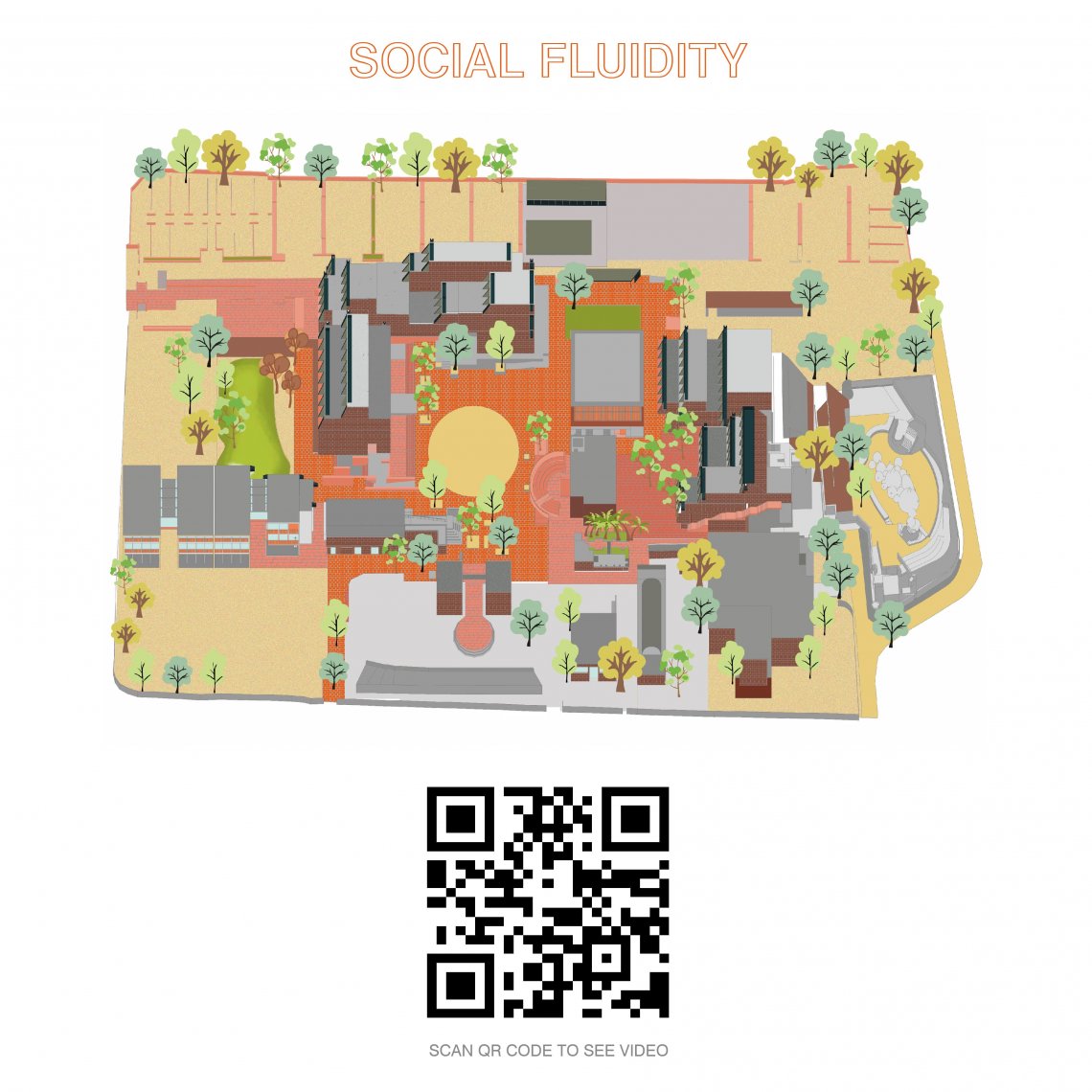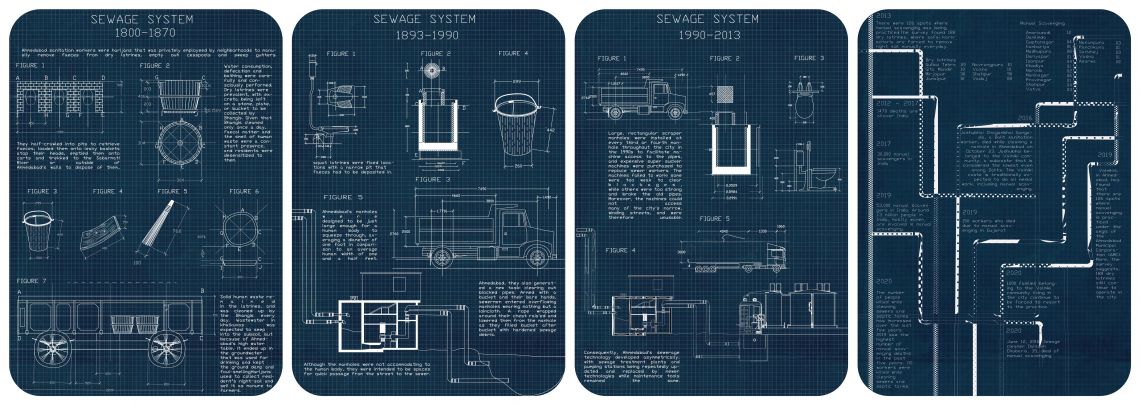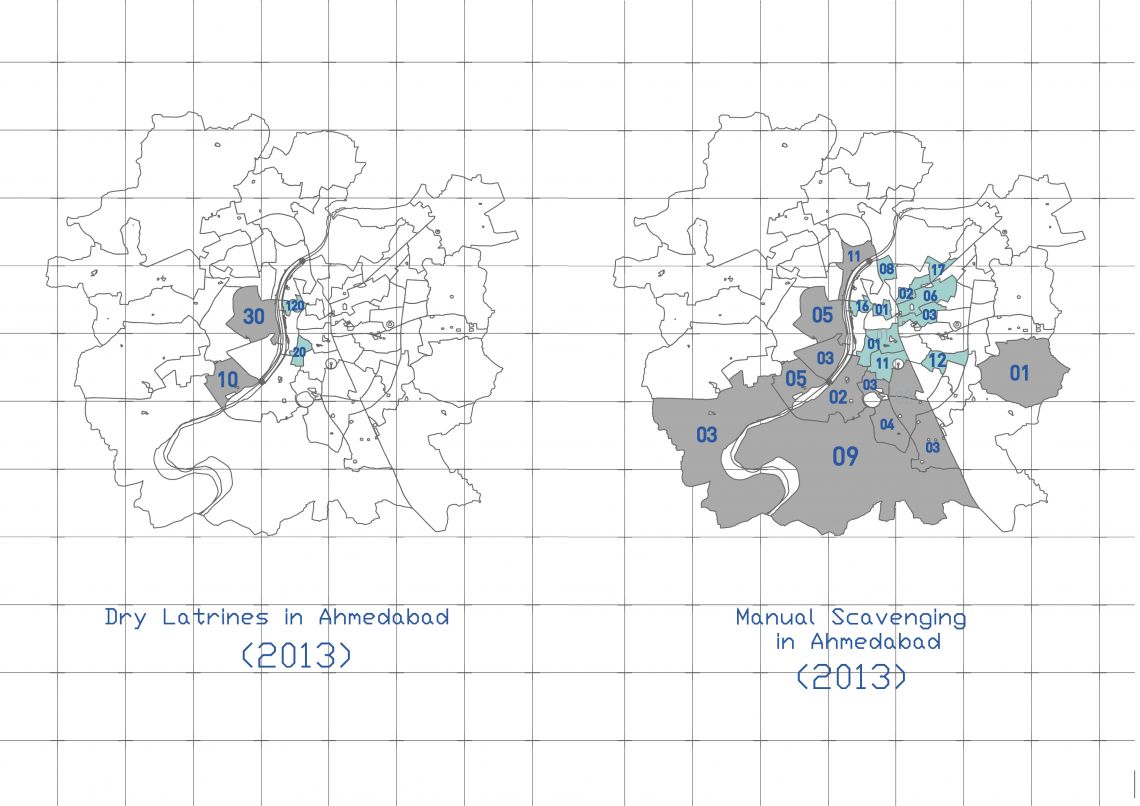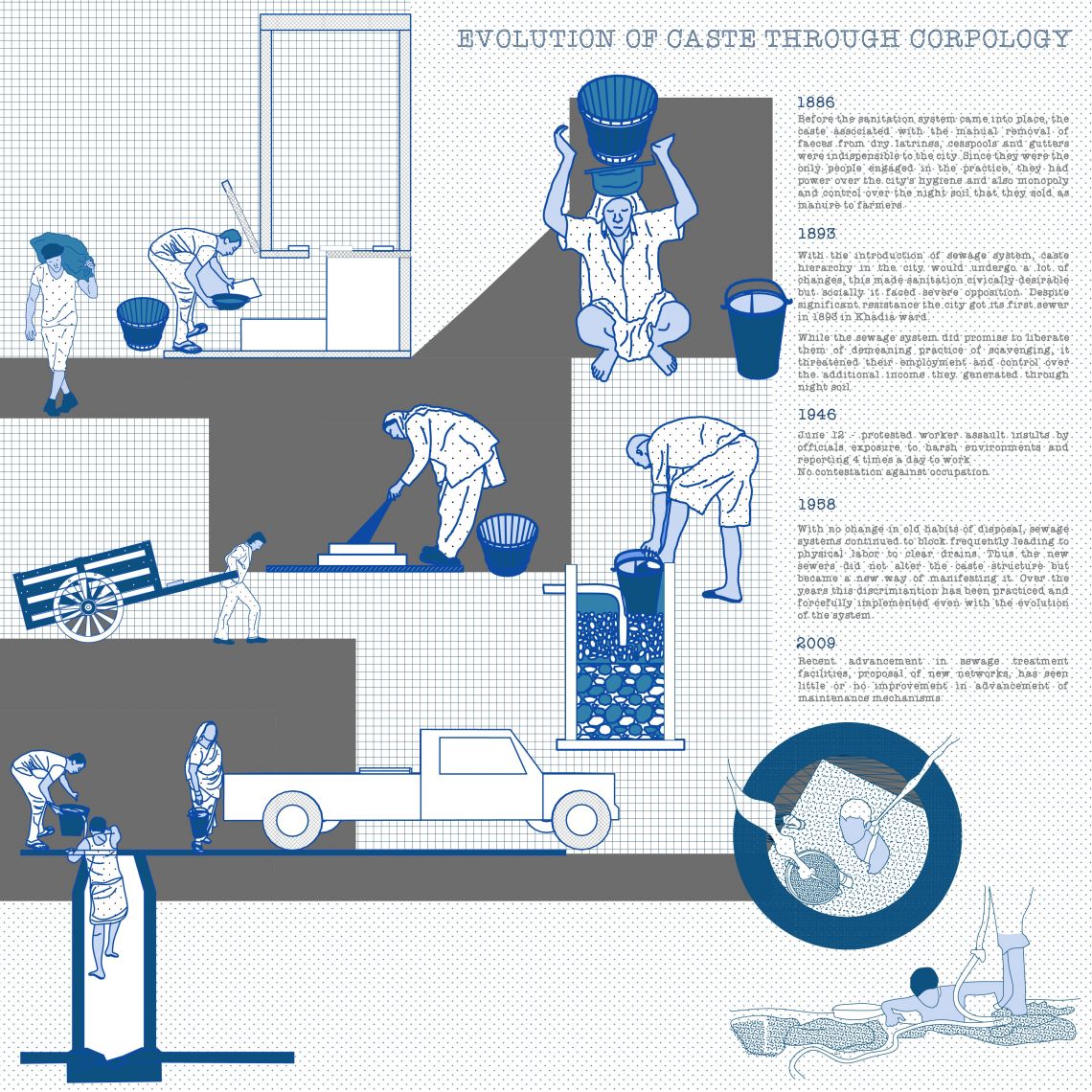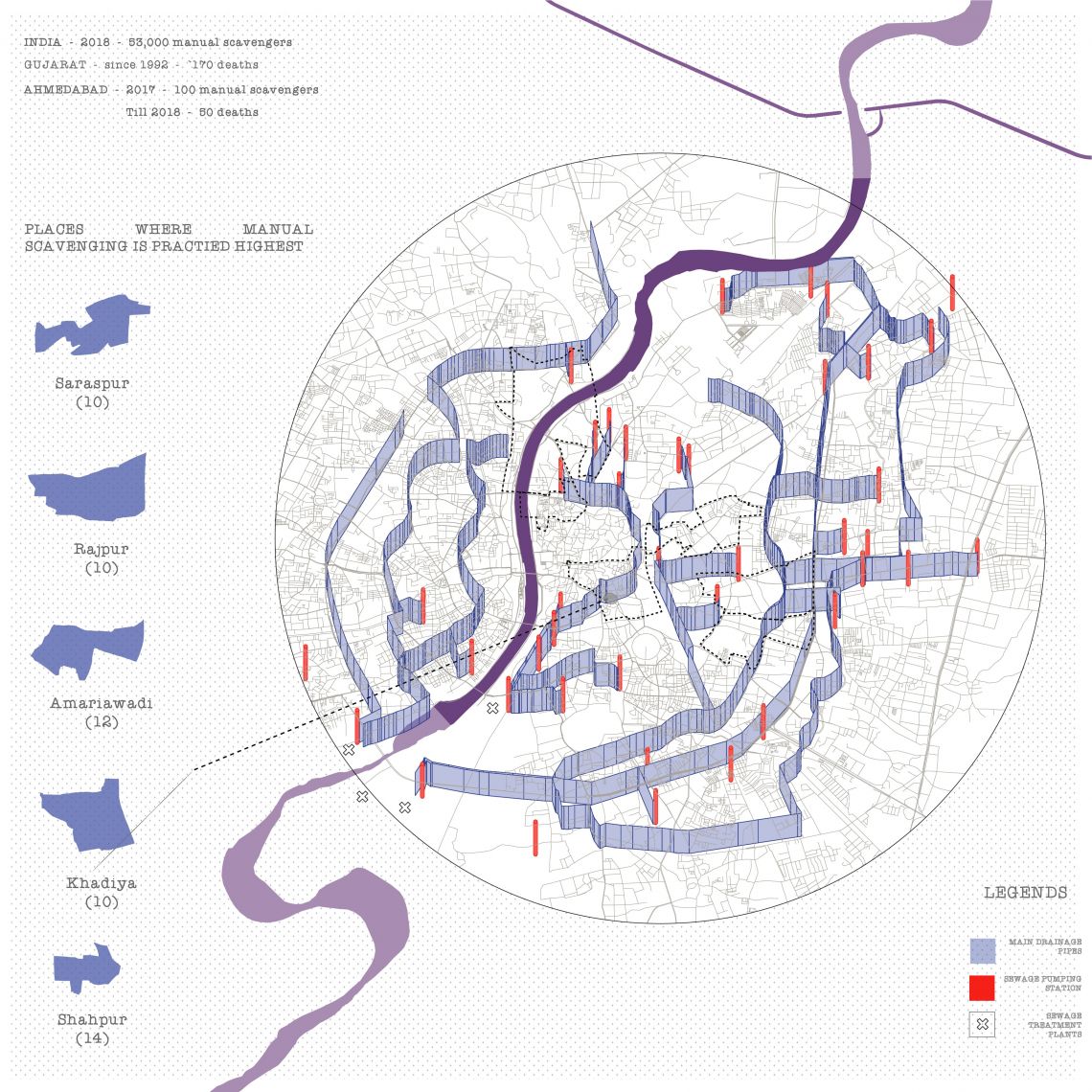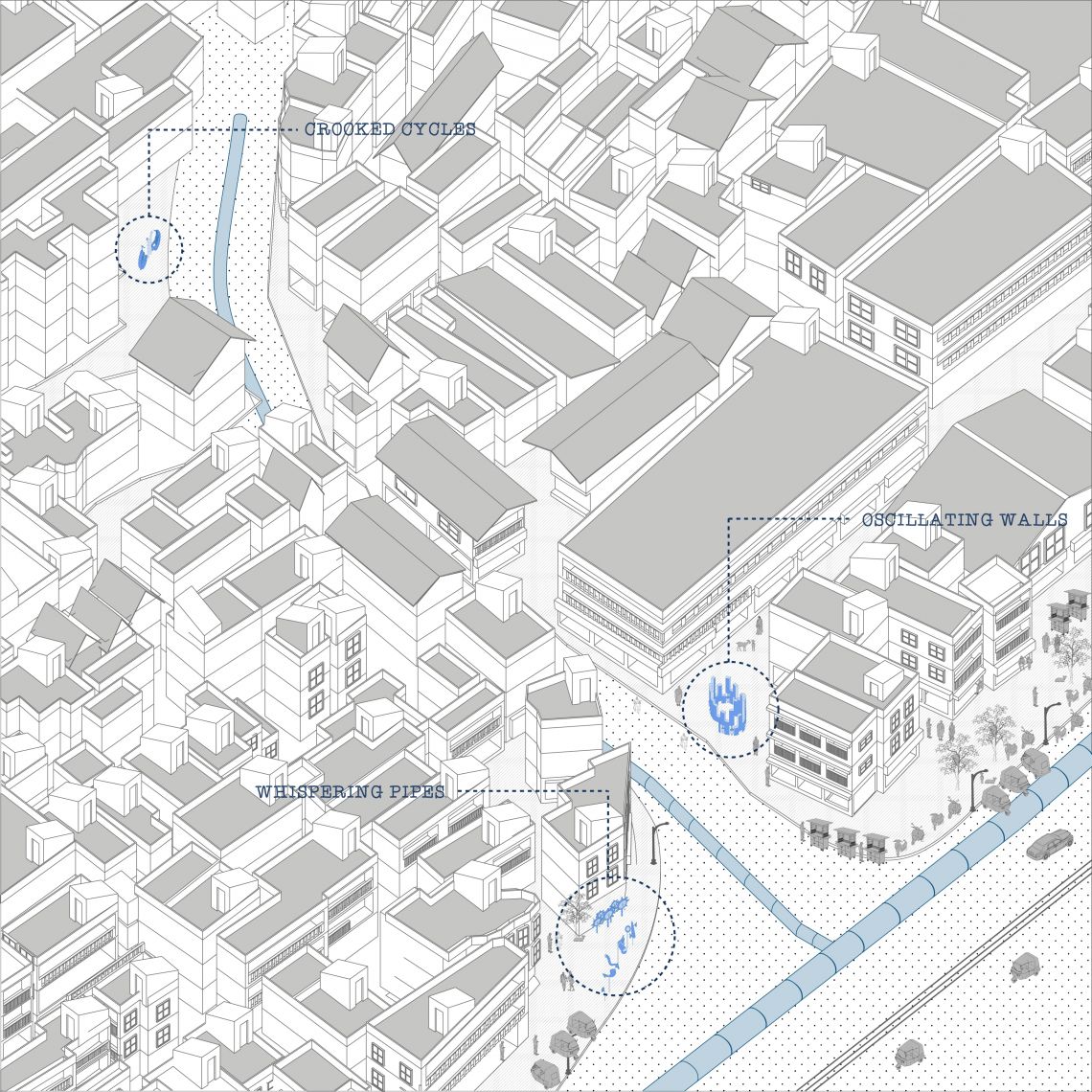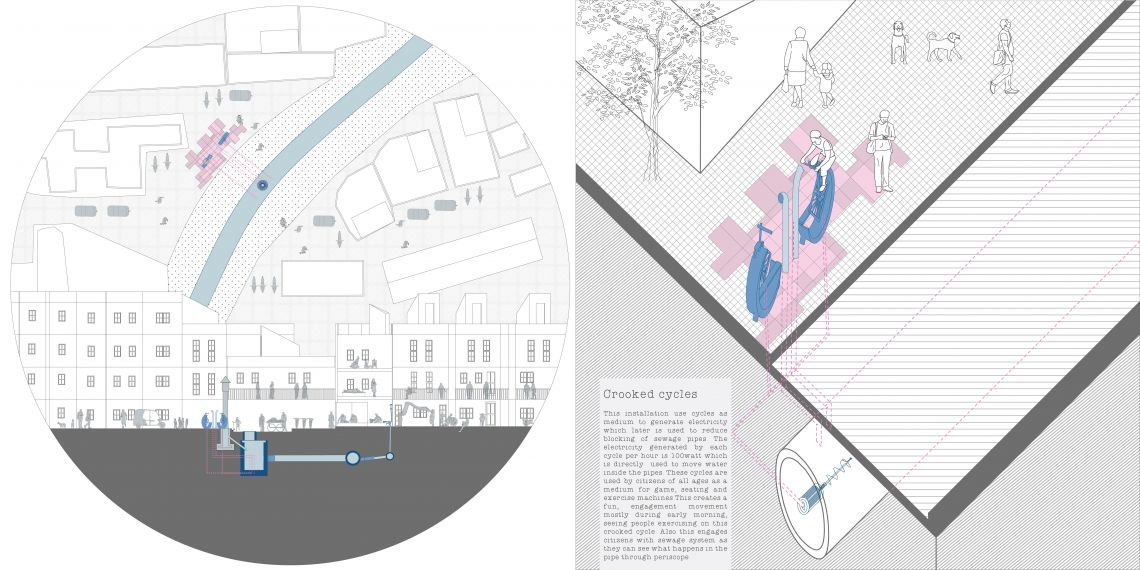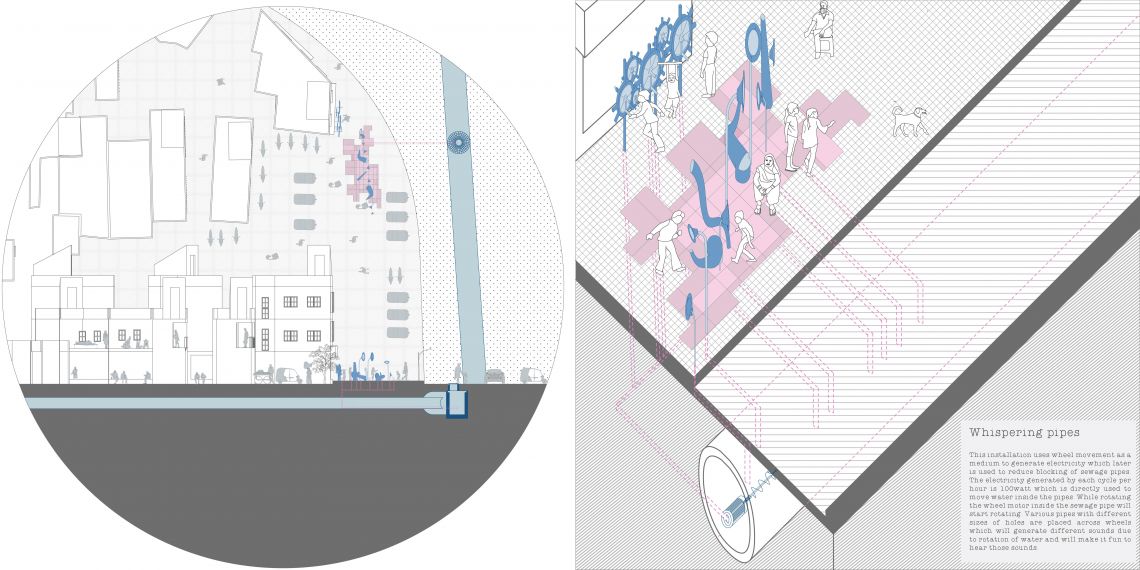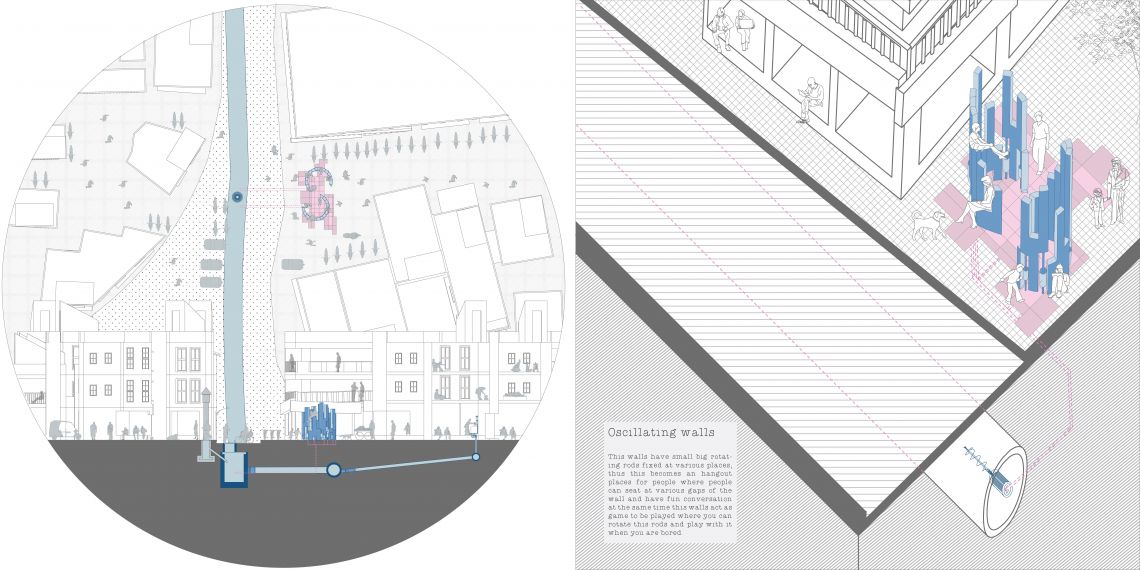Your browser is out-of-date!
For a richer surfing experience on our website, please update your browser. Update my browser now!
For a richer surfing experience on our website, please update your browser. Update my browser now!
PLEASE VISIT - https://www.dwice.online/dhanvi FOR BETTER QUALITY DRAWINGS
Crooked cycles is an intervention that has been injected in this cycle to act as an agent to arrest and destroy blockages in the sewer system. The action of clearing blockages is designed to be a participatory activity that engages people in the act of sewer maintenance. A hybrid of mechanical and electrical systems, each intervention is aimed to be a fun effort involving the community, dissociating removal of blockages as the duty of a certain section of the society.
Sewers were introduced to Ahmedabad as a reform to improve public health, alleviate urban decay and create centralized order. Although associated with social reform and the removal of dehumanizing cleaning practices in its European counterparts, sewage and sanitation in Ahmedabad was designed to create new labor practices that enforced the definition of caste through coprology. It enabled caste based discrimination by giving manual scavenging a new form that made the practice a necessity but also concealed it. The mistrust in a self operating sanitary system ensured that the system was designed not as a self cleansing machine but as a hybrid of human and machine. Thus sewers were designed not as objects but work environments. They were designed sufficiently high for men to walk through them.
Primitive maintenance technology continues to reinforce this cycle of discrimination. Lack of political will and the invisibility of the maintenance processes has arrested the development of maintenance technology. Manual scavenging continues to illegally persist in the city. The city in 2018 recorded 49 deaths related to manual scavenging, the highest in the state of Gujarat. Blockage in the sewer system due to irresponsible and non accountable disposal is the major catalyst that keeps this practice alive continuing the cycle of caste stereotypes
